Opinions and Expertise
Is your customer feedback experience incomplete?
32. 11. 45. Now what? Discover how startup Appcues turned their customer feedback scores into something they could actually use.<br>

Appcues is an in-app messaging platform for delivering user onboarding, product announcements, and user feedback. But their real secret is how they act on their own user feedback. Here’s their story.
I grew up going to Disneyland almost every year. As a result, I started thinking about how experiences can be made to stand the test of time—and at massive scale.
So when I read how Airbnb uses 7-star design to inform the experiences they build, it instantly resonated.
7-star design basically means developing a roadmap for creating a 7 out of 5 star experience for your customers. I love it as a framework for making what Airbnb CEO Brian Chesky calls “mind @$#! experiences.”
But to improve the experiences your company offers, teams need continuous customer feedback on what’s working, what’s not, and what will blow their minds.
There are tons of customer success metrics and tools to collect meaningful feedback. And while there’s no single tell-all measure, one metric has stood out for us:
By building regular in-app recommendation surveys into our customer experience, we’ve improved our product faster and created more meaningful customer interactions.
And how you design your customer feedback experience will inform the type of feedback you get and the actions you should take to build your own mind @$#! experience. Having a handy template to start building your optimal NPS survey comes a long way.
Here’s what we’ve learned about getting customer feedback right.
Set your strategy
First, you need a clear strategy on the following four: owner, audience, method, and frequency.
Here’s what we ask at Appcues.
1. Owner: who’s responsible for customer feedback?
The owner drives your customer feedback strategy. As Director of Customer Experience, I make sure we’re collecting feedback, learning from our customers, and regularly sharing our learnings across the organization.
2. Audience: who should you ask?
We sample 5% of paying users who signed up more than 90 days ago. This way we focus on people who know us well and are clearly getting value from our product.
3. Method: how should you ask?
As an in-app messaging tool, we’ve seen many Appcues’ customers push their response rates upwards of 50% by moving their customer feedback questions in-app. So it was a no brainer for us to do the same.
4. Frequency: when and where should you ask?
We survey our users on a rolling 60-day basis, and only after they’ve visited a few of our web pages. We learned this timing the hard way: after our first approach landed us an influx of detractors.
Then we realized we were poking customers at the wrong time—when they were in the middle of doing something else. Rookie mistake!
So we analyzed user sessions to help us hone in on the best way to ask. The takeaway:
Once we figured this out, we adjusted our targeting and started collecting more valid responses.
Then we dug into what really matters.
Beyond the scores: understanding why
If you’re lucky, the scores will start rolling in. But your customers are more than just a score, right?
So next, you need to design a qualitative feedback strategy that continues the conversation with your customer—and gets to the “why” behind the score they give.
To collect these deeper customer insights, we like to use a one-two punch of in-app messaging and email.
First, we use semi-automation to reach out to every single survey respondent using HubSpot email sequences.
Every survey respondent will receive an email from me within 24 hours of responding that looks something like this:
With this approach, we’ve managed to boost our qualitative feedback rates by around 25% while creating a more meaningful survey experience for all involved.
Here’s exactly how I do it.
Response to positive feedback
When it goes well, I reach out to say thanks. And I keep the conversation going by asking:
- What would put you over the top—turn your score of 10 into an 11?
- What’s the best address to send you a free t-shirt?
- Would you be willing to write us a review on Capterra?
The result?
By asking a few follow-up questions via email, we receive more valuable product feedback from power users and earn new customer reviews.
Response to negative feedback
On the flip side, here’s what following up with less happy customers can look like.
Even though we don’t like getting these, there’s always a lesson to be learned.
And things aren’t always as bad as they might seem.
In the example above, we found out the customer left a “0” score because they needed more out of their data. This was great to know, and we could immediately educate them on options they weren’t aware of.
But customer feedback is only as good as the action you take on it.
Translating insights into action
At each step in your customer feedback process, it’s crucial to build customer and team touchpoints to keep the feedback loop going.
After we’ve collected qualitative feedback, we try to trigger an action that rewards our customers or helps improve their experience.
To do this, we share feedback cross-functionally and in real-time. I make it a habit to pass qualitative feedback to the entire team via Slack. This keeps feedback top-of-mind and sparks conversations about customer needs or concerns.
In one case, a team member was heading to NYC and saw that a customer lived there. So he hand-delivered a t-shirt—along with a product feedback session—the next day in New York. It’s a small step, but one that meant a lot to that customer.
And it all started from a conversation around feedback.
Building feedback into your product
The last step is to incorporate feedback into your product development process. This ensures that the feedback your customers are providing—good and bad—is folded into the experiences you’re building.
We analyze feedback by customer segment, category, and more. And then I summarize customer feedback into patterns and trends that are easy for teams to digest and act on.
Here’s a slide from our April all-hands meeting showing Q1 feedback trends to the whole team:
Sharing this info helps our team stay aligned and focused on creating the ultimate user experience.
Developing your own “guestology”
It’s why the best of the best focus on how they research, collect, and take action on customer feedback. Disney calls their method “Guestology”: the market and customer research needed to learn who their guests are.
Implement regular feedback to inform your company’s Guestology, align your teams, and drive your customers toward that mind @#$% experience.

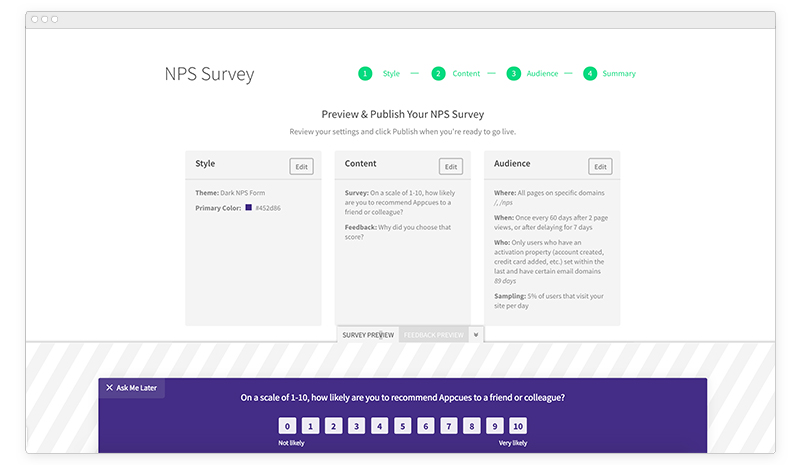
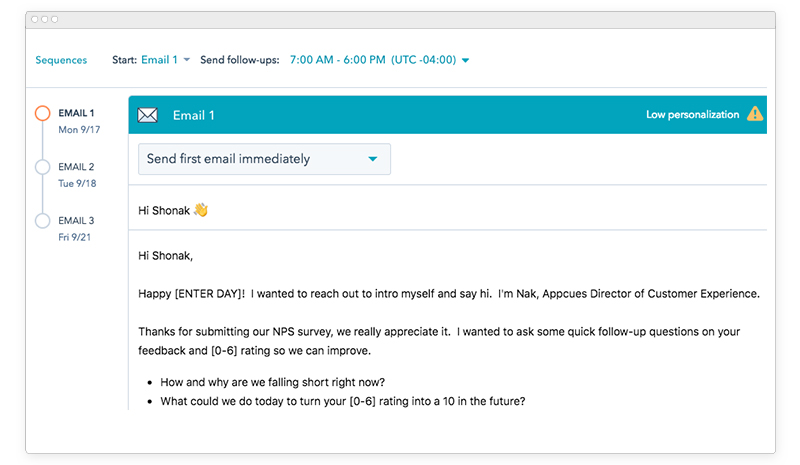
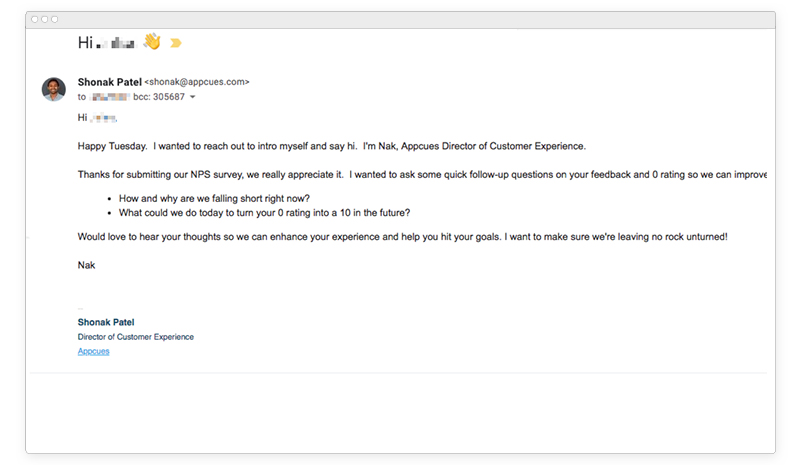
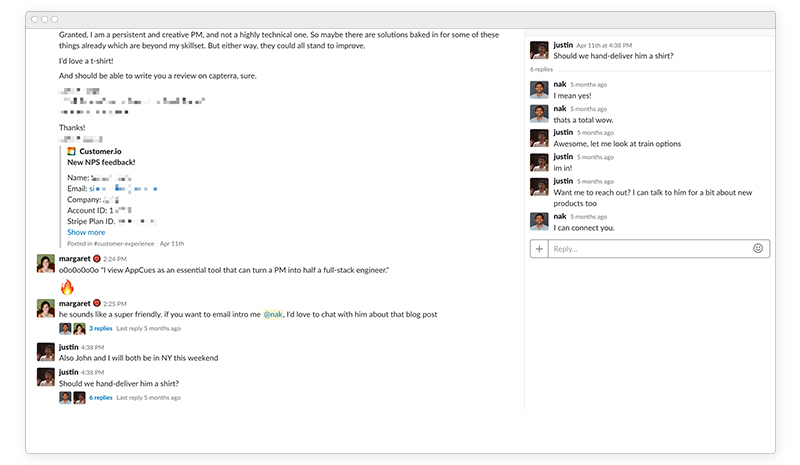
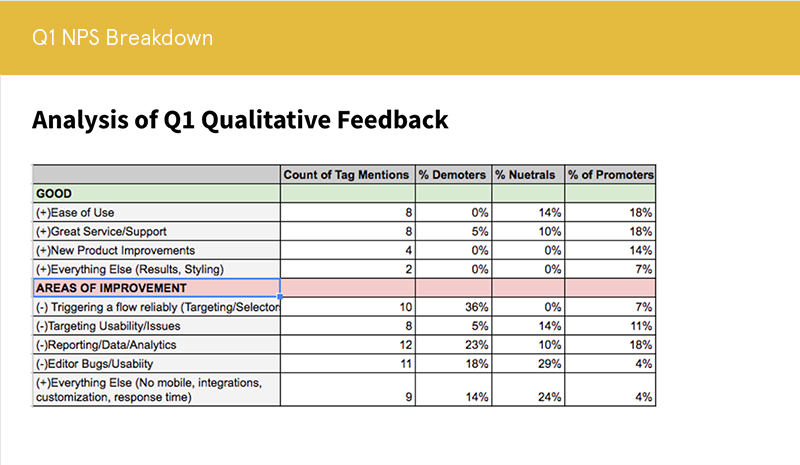


.png)
.png)